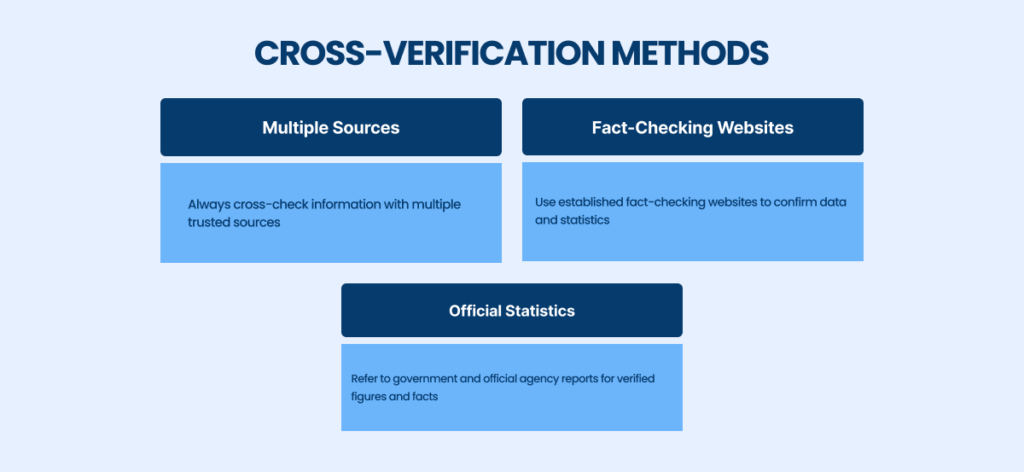The high volume of content being produced is overwhelming.
As a content creator or curator, your challenge is not just to produce content but also to ensure it resonates with your audience. Content curation is a powerful strategy for achieving this.
By carefully selecting and sharing relevant, high-quality content from other sources, you can save time, build credibility, and foster a more engaged community.
Forbes states that the content marketing industry will grow to be worth an estimated $600 billion in 2024.

This growth is driven by multiple factors.
Those are the increase in digital consumption, the growing significance of customized and targeted content, and the incorporation of sophisticated technologies like AI and machine learning into the production and distribution of content.
Accordingly, many businesses turn to a quality Content Marketing Agency to enhance brand visibility and effectively engage target audiences.
The blog post will explore 10 best practices for mastering content curation, guiding you through the essential steps to enhance your digital presence.
1. Understand Your Audience
Understanding your audience is pivotal in content curation and branded content marketing. To curate and create content that resonates, you need a deep understanding of who your audience is, what they care about, and how they consume content.
This approach is widespread, as 90% of all organizations use content in their marketing efforts.
This understanding forms the foundation of any successful content marketing strategy, guiding you in selecting, organizing, and sharing content that aligns with audience preferences and expectations.
Analyzing Audience Needs
The first step in analyzing audience needs involves gathering data through various channels. You can use social media accounts to monitor discussions, questions, and feedback from your target audience.
RSS feeds also serve as valuable tools in content curation, allowing you to monitor industry trends and topics that matter to your audience.
By understanding curated content and how it appeals to your audience, you can better align your content curation strategy to meet their informational and entertainment needs.
Interactive Content Marketing Techniques
Interactive content marketing is another effective way to engage and understand your audience. Tools like polls, surveys, and interactive quizzes can provide direct insights into your audience’s preferences and pain points.
This data is invaluable for refining your content marketing strategy, ensuring that the content you curate and create hits the mark every time.
Tailoring Content to Audience Preferences
Once you understand your audience’s needs, tailoring content becomes essential. Content repurposing is a strategy for adapting existing content to different formats or updating it to make it more relevant to current audience interests.
For example, a popular blog post can be repurposed into a video, an infographic, or even a series of tweets. This extends the life of your original content and makes it accessible to different segments of your audience who may prefer one content format over another.
Curated Content and Personalization
Personalized content leads to a 20% rise in sales prospects. Curated content should be relevant and personalized. A content curation strategy that focuses on personalization involves selecting content that specifically addresses your audience segments’ unique needs and interests.
Source: Forbes
For instance, if you’re curating content for a niche market, the more personalized and targeted your selections are, the more effective they will be.
This could mean featuring industry-specific news, tools, or case studies that reflect the ongoing developments and discussions pertinent to your audience.
Leveraging Branded Content Marketing
Branded content marketing involves creating original content that aligns with your brand’s voice but also caters to your audience’s interests and needs.
This type of content goes beyond mere promotion; it adds value by educating, entertaining, or solving specific problems your audience faces.
Integrating your understanding of your audience into branded content creates a deeper connection and fosters loyalty, which is crucial for long-term engagement.
2. Use Reliable Sources
In content curation, the credibility of your sources can significantly impact the trustworthiness and effectiveness of your content marketing strategy.
Reliable sources enrich the quality of the information shared and bolster your brand’s reputation.
Identifying Credible Sources: Understanding What is Curated Content?
- Definition: Curated content involves selecting, organizing, and presenting information on specific topics from various external publications and databases.
Understanding what is curated content helps to appreciate the process and purpose behind these efforts, ensuring that the information shared is relevant and valuable to the audience.
- Purpose: The goal is to provide value to your audience by filtering through mass information and presenting it in a digestible and meaningful way.
Characteristics of Credible Sources
- Authority: Check for the expertise of the author or the publication. Reliable sources often have recognized authority in their field.
- Accuracy: Sources should provide correct and comprehensive data. They often cite their sources of information, which can be verified.
- Currency: In fast-evolving fields, ensure the information is up-to-date and relevant.
- Purpose: Understand the source’s objective. Reliable sources aim to inform rather than sell or mislead.
Verifying Information Accuracy

Content Gamification and Engagement
- Interactive Quizzes: Create quizzes based on verified facts to engage and educate your audience.
- Polls and Surveys: Use these tools to gather and verify information directly from the audience, adding a layer of interaction.
3. Add Your Unique Insight
In content curation, simply aggregating content isn’t enough to stand out. Adding your unique insights is crucial as it transforms curated pieces into engaging, value-added content that reflects your expertise and brand identity.
This personal touch helps differentiate your content from competitors’ content and enhances your audience’s connection with your brand.
Contextualize the Information
When you curate content, primarily through tools of content marketing, it’s essential to add context to fit within the broader narrative of your brand’s messaging.
For instance, when sharing industry reports or news articles, provide a brief introduction or an overview that links to your previous content or business goals.
Augmented Reality Content Integration
Augmented reality content (AR) offers a unique way to personalize curated content. By 2024, there will be an estimated 1.7 billion mobile augmented reality (AR) user devices worldwide.
Source: Statista
By embedding AR features, you can create interactive experiences that allow your audience to engage dynamically and personally with the content.
For example, if you curate real estate content, you could use AR to allow potential buyers to visualize property improvements or changes.
4. Maintain Content Variety
Maintaining diverse content is crucial in keeping your audience engaged and interested.
Variety in your content curation efforts ensures that you cater to different preferences and learning styles, which can help broaden your reach and enhance engagement.
Mixing Content Types
Incorporate Different Formats
To cater to the diverse preferences of your audience, include a mix of content formats in your strategy.
Source: SemRush
Utilize Interactive and Dynamic Content
Enhancing content with interactive elements can significantly boost audience interaction and retention:
- Quizzes and Polls: Engage users directly by encouraging them to participate in content creation.
- Augmented Reality (AR) Experiences: Create immersive experiences that allow users to explore content in a novel way.
- Webinars and Live Streams: Offer real-time engagement opportunities, providing a platform for live Q&A and discussions.
Balancing Topics and Themes
Identify Core Themes
Start by identifying a few core themes that are integral to your brand and relevant to your audience. These themes will form the pillars of your content strategy, ensuring consistency while allowing for various topics and angles.
Explore Trending and Evergreen Topics
Balancing your content between trending topics and evergreen content ensures both relevance and longevity in your content strategy:
- Trending Topics: These capture the immediate interest of your audience and can drive quick engagement. They’re especially useful for social media content and blogs.
- Evergreen Topics: These remain relevant over time and can continually attract traffic to your site. They’re ideal for deep-dive articles, how-to guides, and educational videos.
5. Leverage Technology Tools
In the digital age, leveraging technology tools is essential for efficient and effective content curation.
These tools can streamline discovering, organizing, and sharing content, allowing you to maintain a consistent presence across various platforms while ensuring your curated and original content resonates with your audience.
Tools for Discovering Content
Finding relevant content to curate is the first step in a successful content curation strategy. Here are some tools and techniques that can help you identify valuable content:
- Content Discovery Platforms: Tools like Feedly or Flipboard allow you to subscribe to various news feeds and blogs, aggregating content into one easy-to-access place.
These platforms are excellent for keeping up-to-date with industry trends and finding new and relevant content to curate. - Social Media Monitoring Tools: Platforms such as Hootsuite or BuzzSumo enable you to monitor social media posts and trends. These tools can help you identify popular topics and content currently engaging your target audience, making them handy for social media content curation.
- Keyword Alerts: Setting up alerts for specific keywords related to your industry can help you stay informed about new content as it’s published. Google Alerts is a simple tool that updates your email directly based on your chosen keywords.
- Competitor Analysis Tools: Understanding what content your competitors are successfully leveraging can provide insights into what your audience might find engaging. Tools like SEMrush or Ahrefs can show you the top-performing content in your niche.
6. Keep SEO in Mind
In today’s digital marketing landscape, Search Engine Optimization (SEO) is critical to any content strategy.
Whether dealing with original or curated content, SEO ensures that your efforts contribute positively to your website’s visibility and ranking. This approach requires understanding how to use keywords effectively and optimizing your content for search engines.
Using Keywords Effectively
Keywords are the backbone of SEO and are pivotal in connecting your content with your target audience.

When curating or creating content, integrating relevant keywords strategically can dramatically improve your visibility on search engines. The process involves more than just stuffing keywords into your content; it’s about placing them thoughtfully to maintain the natural flow and readability.
The first step is to conduct thorough keyword research. Tools for content marketing such as Google Keyword Planner or Ahrefs can provide insights into which keywords your audience is searching for, how competitive these keywords are, and their search volume.
This research helps you understand the most valuable terms for your specific goals and audience.
Once you have identified your keywords, incorporate them into your content. For blog posts or articles, place keywords in the title, headers, and throughout the body where they fit naturally.
Although the direct SEO impact may be less for social media posts, using relevant keywords can help these posts appear in search results on the platforms themselves or in Google search results.
Optimizing for Search Engines
Optimizing content for search engines extends beyond just keywords. It encompasses a range of strategies designed to improve your overall search engine ranking and make your content more discoverable and engaging. This involves both on-page and off-page SEO tactics.
On-page SEO for original and curated content includes optimizing meta descriptions, titles, and headers, ensuring that they contain relevant keywords and are compelling enough to encourage clicks.
Images and videos within your content should be optimized as well, which means including alt-text and descriptions that improve the accessibility and indexability of your media.
7. Engage with Your Community
Engaging with your community is a critical element in maximizing the impact of your content curation efforts.
When your audience feels part of a conversation, their engagement and loyalty to your brand increase significantly.
Encouraging Audience Interaction
Encouraging interaction with your audience involves more than just sharing curated content; it’s about creating a dynamic platform where dialogue is encouraged.
Start by asking questions at the end of each post to invite comments or opinions.
Source: Forbes
Use polls and surveys to gauge audience interest or gather insights on topics they want more information about. Social media platforms are excellent for these interactions because they provide a direct line to your audience’s thoughts and preferences.
Responding to Feedback
Responding to feedback is another crucial aspect of community engagement. Acknowledging comments on social media posts and blogs shows that you value your audience’s input and are open to dialogue.
When responding, be respectful and constructive, especially if the feedback is negative. Address concerns and provide additional information that might help clarify misunderstandings.
Regularly reviewing feedback can also provide insights into how your curated content is perceived and which types of content resonate most with your audience.
Understanding what curated content is and how it engages your audience allows you to refine your curation strategy more effectively to better meet the needs and interests of your community.
8. Consistency is Key
Consistency in content curation is not just about quantity but also about the quality and regularity of your posts. Maintaining a consistent schedule helps set audience expectations and builds a habit of returning to your platform.
Setting a Curation Schedule
Setting a curation schedule involves planning when and what content will be published. This schedule should balance peak engagement times with your team’s capacity to produce and curate high-quality content.
Utilize content curation tools to streamline the process of scheduling and publishing posts. These tools can help automate some of the tasks associated with content distribution, allowing you to maintain a consistent presence online without constant manual intervention.
Your schedule should also reflect the various content types and themes discussed previously, ensuring a balanced mix that keeps the audience engaged and informed.
9. Measure Your Impact
Measuring the impact of your content curation efforts is crucial to understanding what works and what doesn’t. It helps you make informed decisions that can enhance the effectiveness of your strategy.
Tracking Engagement Metrics
Tracking engagement metrics such as likes, shares, comments, page views, and time spent on a page can provide a clear picture of how your content is performing.
Tools for content marketing often come equipped with analytics features that allow you to monitor these metrics closely. Analyzing this data helps identify trends and patterns in audience behavior, which can be pivotal for optimizing your content strategy.
Adjusting Strategies Based on Analytics
Using the data gathered from your analytics, adjust your content curation strategy to better align with audience preferences. If certain types of content consistently perform well, consider curating similar topics or formats.
Conversely, if some posts do not engage your audience, it might be time to revise the approach or experiment with new ideas.
10. Stay Updated on Industry Trends
Staying updated on industry trends is essential to ensure the content you curate remains relevant and informative.
This not only helps position your brand as a thought leader but also ensures your community remains engaged with the latest insights and developments.
Following Industry Leaders
Follow industry leaders and influencers to stay on top of emerging trends and discussions. Social media platforms, industry journals, and professional networks are great resources for finding thought-provoking and forward-thinking content.
Curating content that reflects the latest industry insights shows your audience that you are knowledgeable and proactive in your field.
Attending Relevant Events
Attending conferences, webinars, and other industry events can provide firsthand exposure to new ideas and trends. These events are also excellent opportunities for networking with other professionals who might provide insights into what content is currently valuable and relevant.
Incorporate your learnings and experiences from these events into your curated content, adding a personal touch that can make your posts more engaging and authoritative.
Partner with [A] Growth Agency for Effective Content Curation Strategies
Content curation is more than just sharing other people’s content; it’s a strategic approach to building a strong online presence.
Remember, the key to successful content curation lies in understanding your audience, selecting high-quality content, and adding your unique perspective.
[A] Growth Agency will strengthen your brand, foster community, and ultimately achieve your online goals.
Our professionals believe in the power of data to inform and drive every strategy, ensuring our actions are as effective as they are innovative. Moreover, growth isn’t just what we offer. It’s who we are.
Don’t wait any longer.

